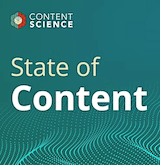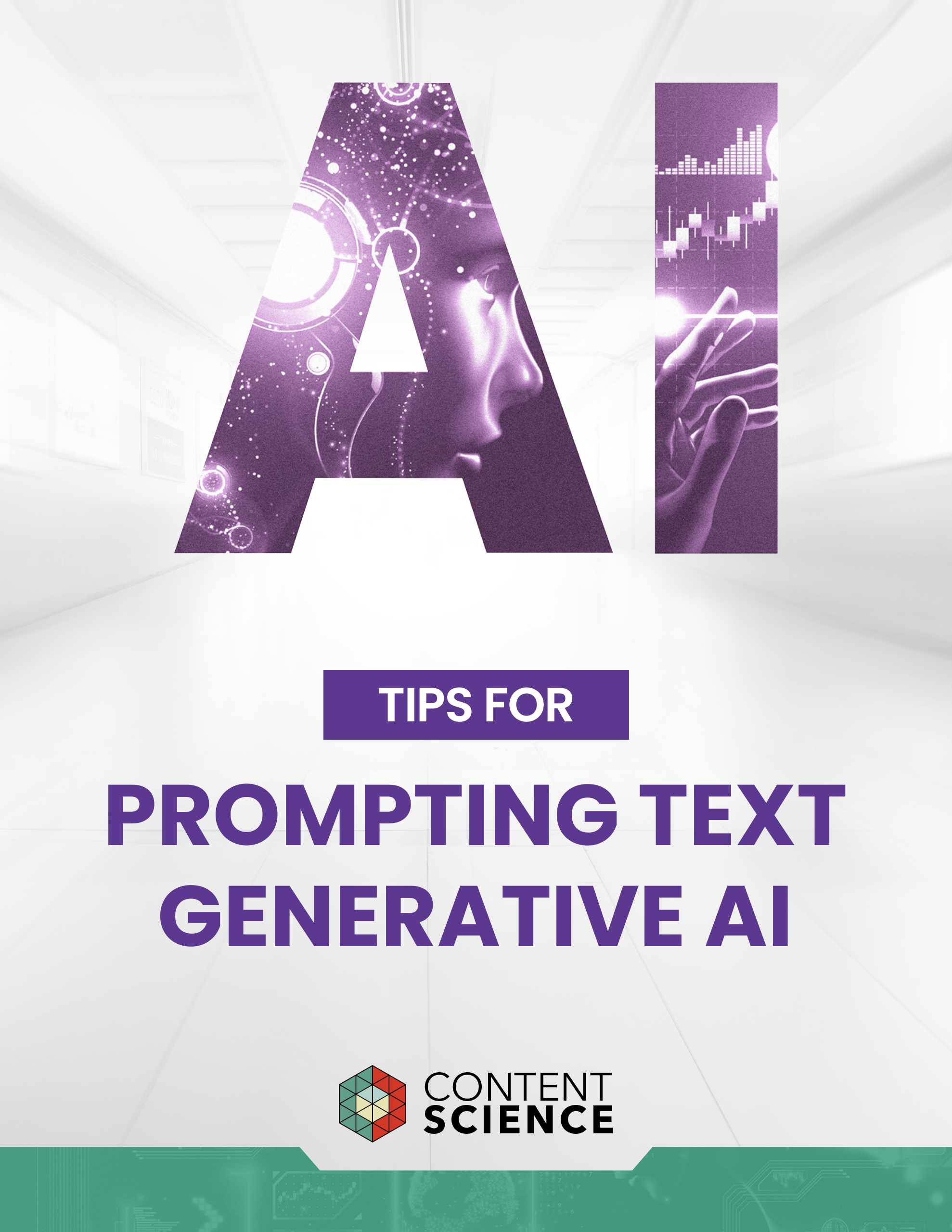
As winner of the most National Magazine Awards of any monthly, The Atlantic consistently delivers quality content to its sophisticated audience who expect culturally rich and relevant pieces. Yet, The Atlantic wants to be known for more than great content. Recently, the magazine launched a new website and expanded Vice President of Marketing Sam Rosen’s position to lead the charge on elevating their brand experience.
Content Science recently spoke with Rosen about his new focus and the keys to a content marketing strategy that works well for their brand and advertising partners, but most importantly, their audience.
Let’s jump right in. What is your definition of content marketing?
The way I’ve often thought about content marketing is using stories and experiences, outside of traditional advertising, to make an impact on someone you’re trying to reach. That impact can be engaging them more deeply, spurring them to buy a product, or inspiring them to feel differently about a brand. Fundamentally, it’s about going beyond the conventional display ad to move whomever it is you’re trying to talk to toward a particular action—again, whether that happens to be something as ethereal as seeing the world in a new way or practical as filling out a form on a website.
Tell us a little bit about your new role and what shapes your content marketing strategy.
As Vice President of Marketing, Head of Brand Experience, I’m focusing primarily on our brand experience and consumer engagement by identifying ways to better serve people who know and love The Atlantic and finding new people in new places. I’m also working on new strategies to help fund our journalism in a sustainable way.
Often, media and journalistic institutions have thought of themselves only as content providers, offering information to keep readers informed and democracy healthy. But I think one shift we’re seeing in the marketplace is that media companies are now also thinking of themselves as brands, period—not just content providers—and aiming to build loyalty with audiences and improve their overall experiences. Now, it’s about building communities of people who share particular sensibilities, and in that context, there are ways to create and exchange value that both benefit people’s lives and support the work we do.
What are some of your tactics for cultivating deeper relationships with your audience that could provide some guidance to any brand striving to put the audience first?
Part of the equation is getting a qualitative picture of our audience—ethnography, essentially. Another important component, though, is investing in more quantitative insights and technologies that allow us to understand who our audience is and how they engage with our brand. From a mixture of qualitative and quantitative insights, we can understand how to create new and better brand experiences—not just of a different type, but also of a different kind.
Those insights extend to everything we do, from how we go about creating and serving advertising experiences—whether that’s native content or high-impact ads—to how we engage with our audiences across channels, along with the products and services we develop for them. As a brand, we’ve been ruthlessly focused on being audience-first, and now, we’re reorienting ourselves even more around our audience and community so we can create the best experiences for them, whether we’re talking about advertising, editorial content, or premium products.
What trend is most intriguing to you right now in content marketing?
One of the most significant trends I see in content marketing is a movement toward transparency and accountability. Several years ago, many didn’t know the term content marketing. As the idea took hold, though, there was a raw excitement and enthusiasm to be able to expand beyond the traditional ad. Everyone saw an incredible opportunity for storytelling as a new means of communicating with, and engaging, an audience. Around the same time, social media forced a lot of brands to become publishers, and the recession put consumer trust at an all-time low. So, there was a confluence of events, I think, that created a widespread rush to get into the content game.
Now, we’ve reached something of a critical mass of business thinking of themselves as media companies or publishers, at least to some degree. Not surprisingly, then, content marketing budgets have started to creep into traditional media and advertising budgets—although I believe that a lion’s share still goes to traditional marketing. But there have been enough companies to endorse content marketing, like GE, Red Bull, IBM, and others, that, today, nearly every brand is thinking about content in some way.
As content marketing matures, there’ll be a natural tendency to want to place the same constraints against it as there have been against traditional marketing and advertising. If you’re a B2B brand, for example, you want to know how many leads you got from a particular campaign. If you’re B2C, you’re likely doing brand studies and asking, “Is this changing the way people feel about us, and is it actually encouraging them to buy more of our products?” For a while, content marketing enjoyed a bit of immunity to those constraints, except, probably, for more lead-generation-oriented businesses. Now, though, I think more and more marketers, both B2B and B2C, are looking to link content to performance, whether that means a lead generated or someone feeling differently about the brand or intending to purchase a product or service.
One of the most interesting and challenging opportunities for content marketers right now is becoming even more inventive and attention-grabbing in how they’re telling stories while also creating media that’s more accountable to the metrics that have usually defined advertising—while, at the same time, also finding new metrics and new ways of measuring. Part of the reason for the latter is that because content is often used to reach a niche audience, it doesn’t necessarily achieve the same scale you’d normally need for a more-traditional brand study that’s done via display advertising, mail, online survey, or other means of gathering mass opinions.
We’re entering this really interesting era, I think, where more and more marketers are getting into the content space, so that creates a greater need for better, more creative storytelling and more accountability. I think content is having a bit of a “What have you done for me lately?” moment. And that’s spawning the need to develop new and more accurate measures of actually capturing who an audience is and how they feel about the brand that’s either creating or supporting the content marketing itself.
What is key to making a content marketing strategy successful?
To make content marketing work really well, I think you need, beyond raw inventiveness and ambition, to have all of the most important stakeholders—including the senior-most people who are ultimately responsible for approving the campaign or program you’re launching—aligned on the key insight that’s going to power your entire content strategy and present at the most critical junctures and decision-making moments along the way. Which is to say, it’s important to have all of the key people who are going to be judging the ultimate success or failure of a program at the table and on the same page from the outset.
When content marketing goes awry, I think it’s often because one or both of two things have happened:
- There’s been a game of telephone, and by the time it gets to the senior-most executive or decision maker, the original insight or idea that got everyone excited has been morphed beyond recognition or never conveyed in the first place; or
- The content experts aren’t allowed to run with the insight or idea in a way that allows them to shine as storytellers and creators.
So, those three things—clarifying and aligning at the outset; staying together along the way; and putting trust in the storytellers and creators—are, in my experience, vital to executing a successful content strategy. There’s always, of course, going to be creative friction along the way. That’s healthy. And it’s certainly the marketer’s job to evaluate whatever’s being produced through the brand’s lens: its mission, values, tone, voice. But sometimes—and this can be counterintuitive—I think you, as a marketer, also have to let go. I’m experiencing that now: for a campaign we’re working on, I’m the client. So I’m constantly having to take my own medicine. I’ll fight for the brand, yes, but I also have to remember that I’m anything but objective.
So, being together on the key insight and larger creative idea but allowing the experts to run with it—I think that’s what often allows content marketing to shine.
Read Part 2 of our Content Science Review interview with Sam here.
Events, Resources, + More
State of Content Webinar
Jan 22! Start the year smart with this free Content Science webinar. Reflect on 2024 and prepare for what's likely in 2025.
The Ultimate Guide to End-to-End Content
Discover why + how an end-to-end approach is critical in the age of AI with this comprehensive white paper.
The Content Advantage Book
The much-anticipated third edition of the highly rated book by Colleen Jones is available at book retailers worldwide. Learn more!
Course: Prompting Text Generative AI
Learn how to bring out the full potential of text generative AI to create impactful content from this on-demand course.
20 Signs of a Content Problem in a High-Stakes Initiative
Use this white paper to diagnose the problem so you can achieve the right solution faster.
Upskill with Content Science Academy
Training for modern content roles through on-demand certifications + courses or live workshops.









Comments
We invite you to share your perspective in a constructive way. To comment, please sign in or register. Our moderating team will review all comments and may edit them for clarity. Our team also may delete comments that are off-topic or disrespectful. All postings become the property of
Content Science Review.